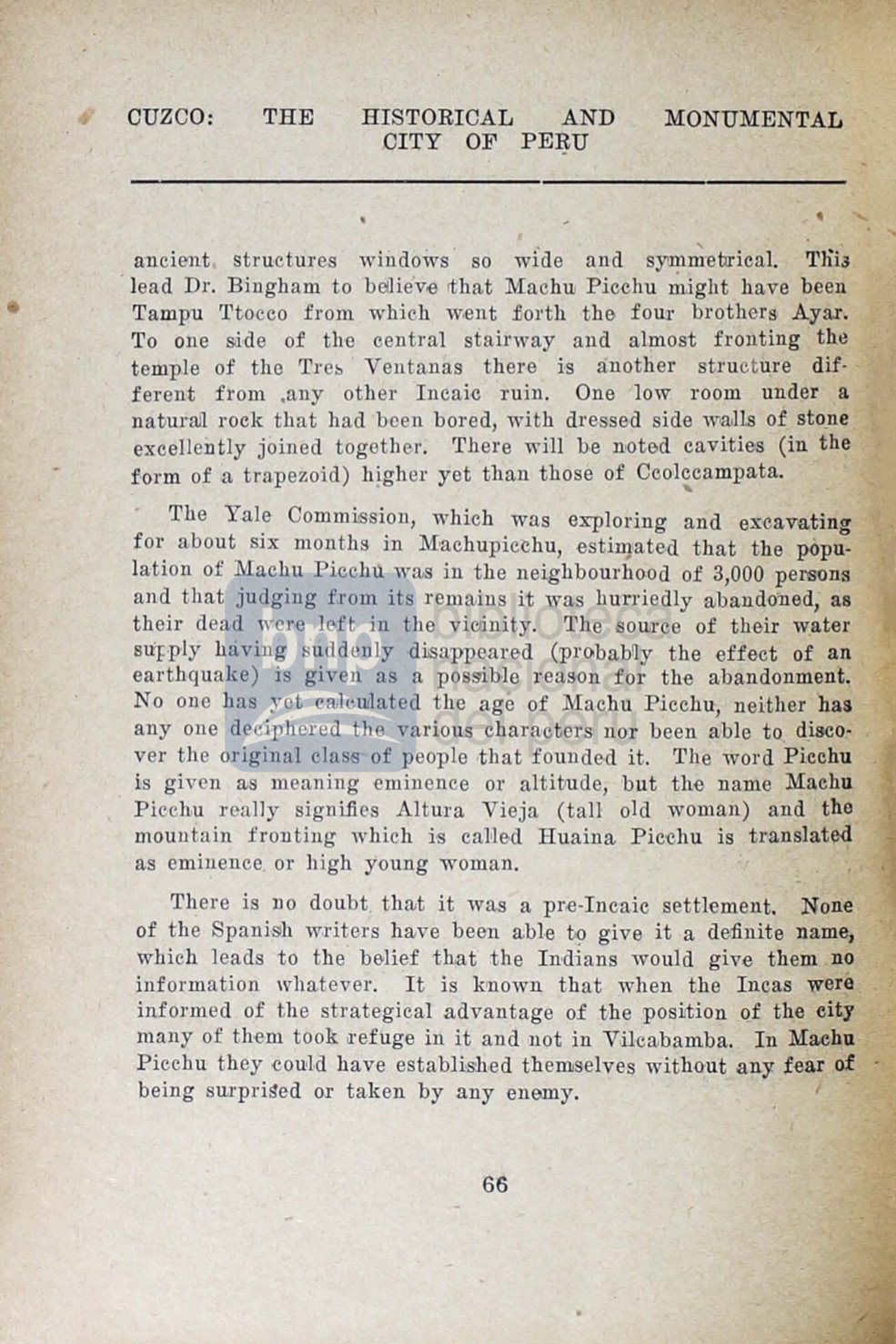

CUZCO:
THE
HISTORICAL
AND
MONUMENTAL
CITY OF
PE~U
a;ncie<ll!t
structures windows
so wide and
syunmebrieal.
Tni3
lead Dr. Bingham to befüeve ithat Machw Picehu
~ght
have been
TamP'u Ttocco from whieh w.ent .fiorth t hs fowr brothers, Ayar.
To one s.1de of the central stairway aud almost fronting tite
templ·e of the Treh · Ventanas
there
is ánother structu,re dif–
ferent from ,any other Incaie r uin. One
low room under a
natmraJl rock that had been bored, with dressed side wiaills of sto_ne
excellently joined together. There will be nioted cavities (in the
for ro of a trapezoid) higher yet than those of Ccolccampata.
The Yale Commi!Ssion, whfoh was exploring and excavating
for about six months in
Machupie~hu,
estill}1ated t hat the popu–
la·tion of Machu Piechú was in the nei,ghbourhoo d of 3,000 pemuns
and that judging from its remaiius it was huTTiedly robandoned, as
their del),d \' er
t
in tbe vicónity.
T e sot1irce of their water
su'¡;.p·Jy haviJng
u
a,
~ d~appe.ared
(pX()babn¡y t he effect of an
earthquake) is give
as a pos5'$1e rea&on fo1· the abandonoment.
No
011e
has
llJ!ated the age of Maehu Picchu, nerther has
any one deeip!rared t;he
var~ou.s
cbaraicitei:s no:r been a!ble to disco–
ver the óJ"igiual class of
eople •that fouude·d it. The wor d Picchu
1s given as meaning eminence or altitmde, but the name Maehu
Pieclm r eally signiíies Alturn Vieja (tall old woman) and the
mountain fronting wbieh
il'3
ea1'le.d Huaina P icehu is t 1,anslatll'd
as eminenee. or high young woman.
There is no doubt. that it was a pre-Incaie settlement. None
of the Spa1üsh wJ'iters l1ave be6'Il a:ble
~
give it a delfinite name,
which leads to the
b~lief
that the I ndiana would give them no
information whatever.
It
is k'llown t hat when the I ncas were
informed of t he strategieal advantage of the posiition of the eity
many of
tJi.emtook a·efuge in it and not in Vilcaibamba.
In
Maiehu
Picchu they eouil.d have
estabJi.sh.edthemselves with-0ut any fear
of
being
sw·pri~ed
o.r tak
enby any enemy.
66
















